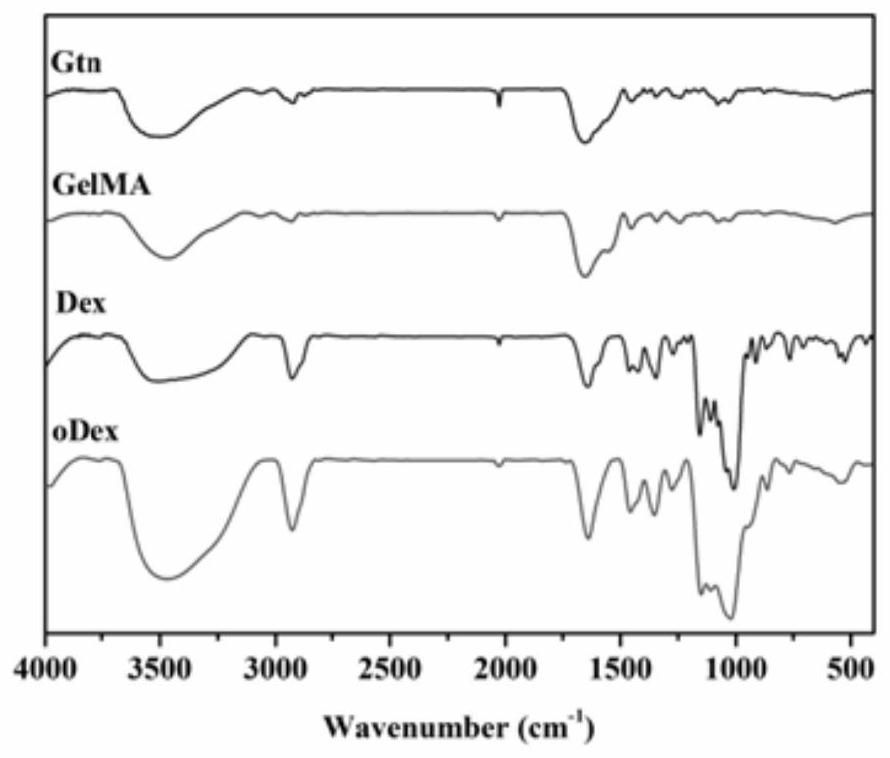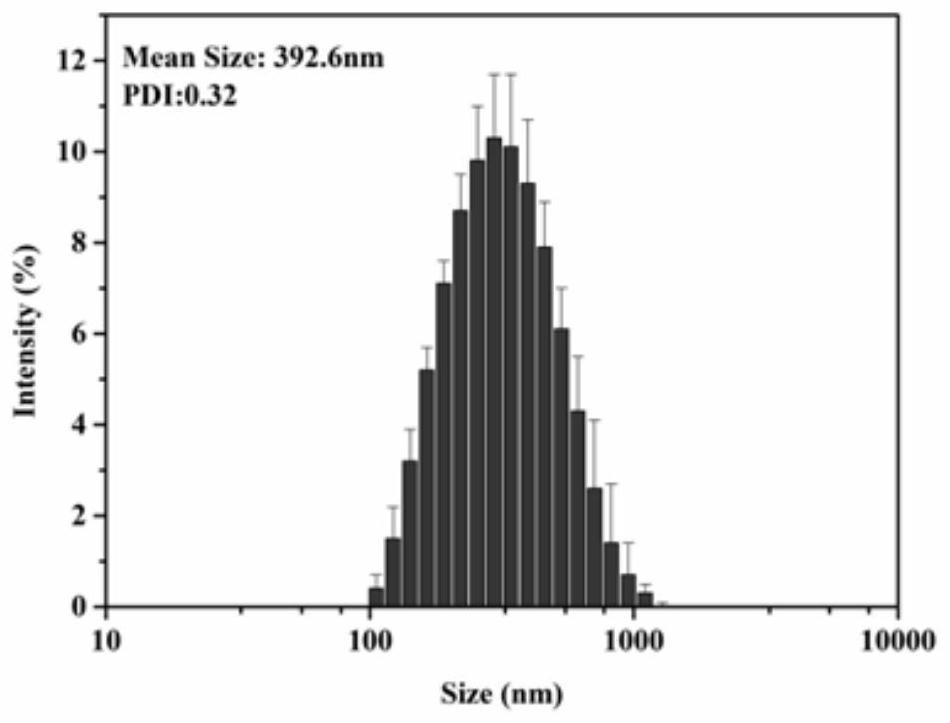An antibacterial hydrogel wound dressing loaded with two-dimensional materials and nanoparticles and its preparation method
A nanoparticle and two-dimensional material technology, applied in antibacterial drugs, wave energy or particle radiation treatment materials, medical preparations containing active ingredients, etc., can solve the problems of nanoparticle cytotoxicity, antibiotic resistance, life Organ damage and other problems, to achieve the effect of solving the problem of bacterial infection, promoting migration and proliferation, and promoting wound healing
- Summary
- Abstract
- Description
- Claims
- Application Information
AI Technical Summary
Problems solved by technology
Method used
Image
Examples
Embodiment 1
[0036] Embodiment 1: the preparation of methacrylated gelatin (GelMA)
[0037] Dissolve 0.5-2.0g of gelatin in 20mL of deionized water, heat in a water bath at 50°C and stir until completely dissolved. After the gelatin is completely dissolved, slowly add 0.5-1 mL of methacrylic anhydride into the gelatin solution drop by drop with a rubber dropper. Then the mixed solution was magnetically stirred and reacted at a speed of 500-800rpm / min in a water bath at 50°C for 1-4 hours, then transferred to a dialysis bag (molecular weight cut-off of 3500Da), and dialyzed in deionized water for 5 days to remove unreacted of acid anhydride. Finally, centrifuge the reaction solution at a speed of 3000-8000rpm / min for 2-5min, collect the supernatant, freeze it at -80°C, place it in a freeze dryer, and freeze-dry it. The floc obtained is the target product methacrylic acid Melted gelatin (GelMA). The resulting methacrylated gelatin (GelMA) had a degree of substitution of 62%.
[0038] In ...
Embodiment 2
[0041] Embodiment 2: Preparation of oxidized dextran (oDex)
[0042] Dissolve 1.0-3.0 g of dextran in 200 mL of deionized water, and stir until completely dissolved. Add 1.0-2.0 g of sodium periodate into the dextran solution under the condition of avoiding light, and react with magnetic stirring at a speed of 500-800 rpm / min at room temperature for 3-4 hours in the dark. Finally, 2 mL of ethylene glycol solution was added to the reaction solution, and stirring was continued for 0.5 to 2 h to remove excess sodium periodate to stop the reaction. After the reaction was completed, the reaction solution was collected and transferred to a cellulose dialysis bag (molecular weight cut off: 3500 Da), and dialyzed in deionized water for 5 days. After dialysis, the solution was frozen at -80°C and placed in a freeze dryer, and the spongy substance obtained after freeze drying was the target product, oxidized dextran (oDex). The degree of oxidation of the obtained oxidized dextran (oDe...
Embodiment 3
[0046] Embodiment 3: the synthesis of two-dimensional borophene nanosheet (Borophene)
[0047] Weigh 10-30 mg of boron powder and disperse in 30-60 mL of saturated sodium hydroxide solution of methylpyrrolidone (NMP), and then sonicate the dispersion for 6-12 hours in an ice bath using a cell pulverizer. Centrifuge the turbid solution obtained by ultrasound at a speed of 3000-8000 rpm / min for 5-10 minutes to remove large particles of boron powder that have not been peeled off, and then collect the upper layer of brown supernatant, which is the dispersion of two-dimensional boronene nanosheets. The method uses a liquid phase exfoliation method to prepare two-dimensional boronene nanosheets, and the yield is about 42%.
[0048] In the present embodiment, the consumption of the boron powder is preferably 20 mg; the consumption of the saturated sodium hydroxide solution of the methylpyrrolidone (NMP) is preferably 50 mL;
[0049] The ultrasonic time is preferably 12 hours;
[00...
PUM
| Property | Measurement | Unit |
|---|---|---|
| particle size | aaaaa | aaaaa |
| width | aaaaa | aaaaa |
| particle size | aaaaa | aaaaa |
Abstract
Description
Claims
Application Information
 Login to View More
Login to View More - R&D
- Intellectual Property
- Life Sciences
- Materials
- Tech Scout
- Unparalleled Data Quality
- Higher Quality Content
- 60% Fewer Hallucinations
Browse by: Latest US Patents, China's latest patents, Technical Efficacy Thesaurus, Application Domain, Technology Topic, Popular Technical Reports.
© 2025 PatSnap. All rights reserved.Legal|Privacy policy|Modern Slavery Act Transparency Statement|Sitemap|About US| Contact US: help@patsnap.com



